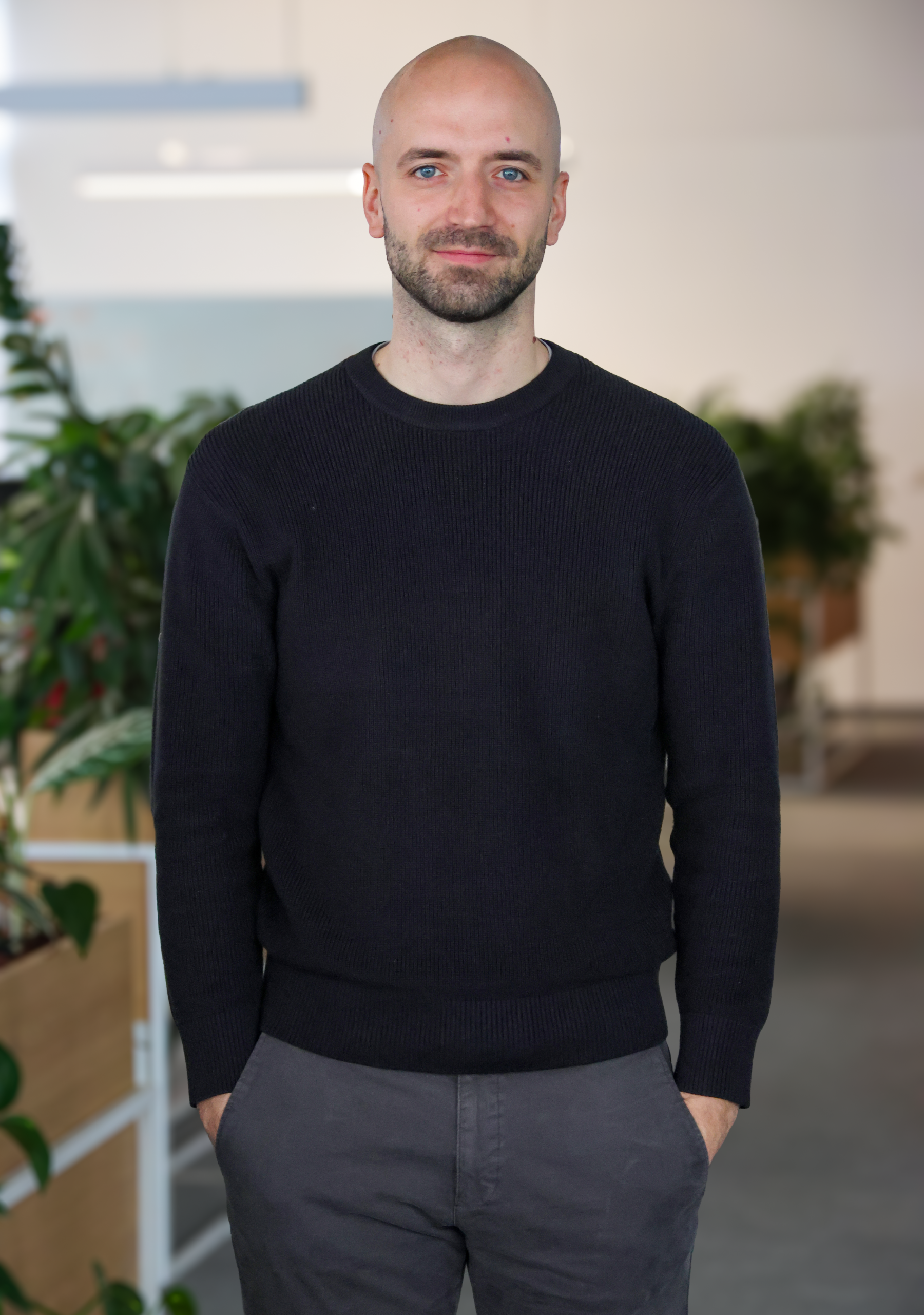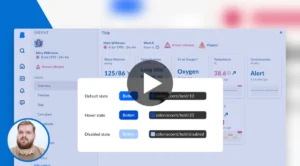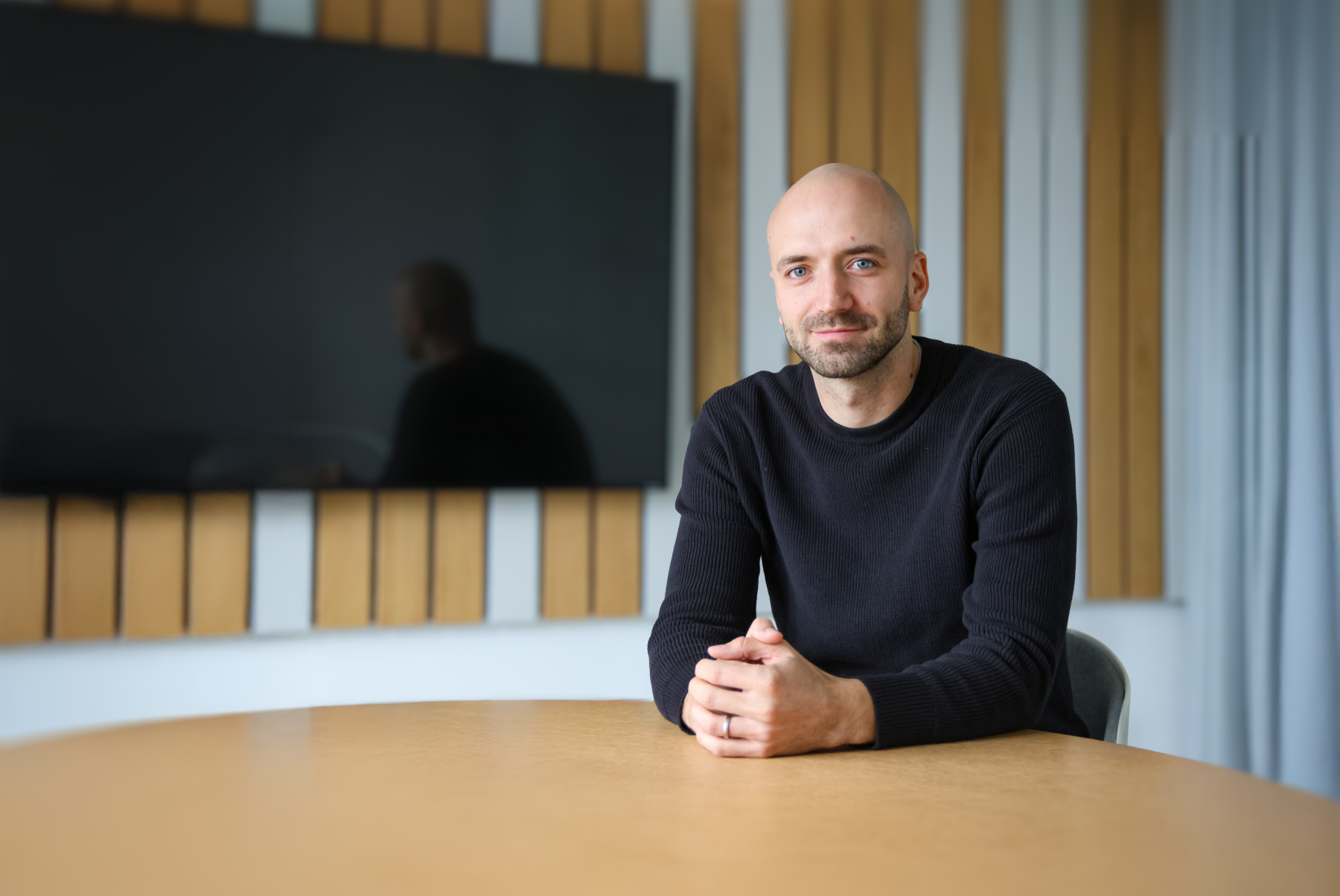“I always try to balance the quality of the code, delivery speed, and business value. It is easy to focus on just one, but the challenge is maintaining the balance in all three,” said Metod Ribič when we asked him what the one thing about his job other people don’t know.
Metod is a technical team lead at Better Studio, our low-code development tool, where they are always trying to find the right balance between making applications simple and intuitive for users while handling the complexity of the underlying system. From his first HTML webpage with some text and a few images, he was captivated by the web, the technology behind it, how everything is connected, and how he could leverage it to build software that would help others. He found this at Better, where he started as a junior frontend engineer, and he is still “super excited for the future since we have a lot of interesting things to tackle, from a technical perspective as well as from an impact perspective”. Read what more Metod told us and get to know him in an interview below.
You are part of the team behind Better Studio, our low-code development tool. What does your working day look like, and are there two days alike?
I usually start my day around 7 in the morning, when most of the company is still offline. This is the time when I can focus on the most challenging or urgent tasks. After that I usually catch up on emails and questions from the team and clients. Afternoons are typically reserved for more focused work, depending on priorities, of course. Tuesdays and Wednesdays are different, as I am usually on-site instead of working from home. I use those days primarily for meetings and to connect with colleagues in person. While I enjoy the focus that comes with remote work, I find the face to face conversations more efficient. No two days are the same and that’s exactly what keeps it interesting!
What first sparked your curiosity for technology and building things? Was there a moment when you knew this was your path?
As a kid, I spent a lot of time behind a computer, but it never crossed my mind that I could build things with it until high school. I still remember my first HTML webpage with some text and a few images. This sparked a passion in me for the web, the technology behind it, how everything is connected, and how I could leverage it to build software that would help others.
How would you describe the Studio’s evolution since you joined, and what excites you most about where it is heading?
The Studio, as a product as well as a team, has evolved quite a bit over the years. I am one of the first members to join Studio, and back then, we would usually agree on what needed to be done over a morning coffee. Since then, many talented people have joined our team, and now we are more than 20. This requires more collaboration and new processes, so we are all aligned on what the most important next step is. I am super excited for the future since we have a lot of interesting things to tackle, from a technical perspective as well as from an impact perspective. The more we help people and organisations digitalise their processes, the better the patients can be treated, and this is what matters in the end.

Studio is empowering clinicians to build applications themselves. From a developer’s perspective, what is the biggest challenge in making something powerful yet simple to use?
Since the very beginning, we have tried to hide as much of the complexity of openEHR and the technical side of building applications as possible, and it is still one of our main focuses today. The biggest challenge is finding the right balance between making the applications simple and intuitive for users while handling the complexity of the underlying system. Some things in low-code will still require coding, but we try to minimise those cases as much as possible.
What is something about your job that most people might not realise, a detail or a challenge that happens behind the scenes?
I always try to balance quality of the code, delivery speed, and business value. It is easy to focus on just one, but the challenge is maintaining the balance in all three.
We live in a world of constant change and innovations. When it comes to using new tools or frameworks, how do you decide what’s worth adopting and what’s just a passing trend?
In the tech world, there is always something new on the horizon, and it’s easy to get excited about the latest innovations. Before jumping on a “hype train”, I like to ask myself how we can benefit from this new thing. I also pay attention to how mature the ecosystem is and whether there’s an active community behind it. A strong community usually means the tool will evolve and stick around. Not every shiny new thing needs to be adopted, but it’s always worth understanding how it works and what problems it solves in case you need it someday. In healthcare, where release and testing cycles are relatively long, we take a more careful approach when adopting new technologies.
AI is becoming an important part of development workflows and healthcare solutions. How do you see AI fitting into your work and what do you think its real value is for developers and clinicians?
I see AI as a productivity booster that can help with repetitive tasks and help us reason through complex problems, but it still requires human supervision and context. In healthcare, that balance is even more important. AI can support clinicians and medical personnel, but people must remain in control, especially when it comes to critical decisions and patient safety.
How has working at Better helped you grow as an engineer and as a person? How do you see your progress and personal development at Better?
I joined Better almost a decade ago as a junior frontend engineer, and since then I have grown into a technical team lead. I am lucky enough to work with incredibly smart people who challenge me every day. Over the years, I have learned not only how to build better software but also how to communicate more effectively, listen actively, collaborate, and help others grow. Better invests a lot of resources in its people so we can grow, and I am truly grateful for that.
You describe yourself as someone who is always learning. What’s the last new thing you learned that surprised or inspired you?
I have always been curious about how things work, whether it is related to technology or completely random things I come across. Lately, I have been reading about quantum physics, and it has blown my mind how abstract it is compared to traditional physics we were taught in school, where everything can be predicted or measured.
When you need to completely disconnect from code and screens, what do you do to recharge?
Whenever I get the chance to disconnect, I love to go hiking, especially with my family. I enjoy everything about the mountains: the peace, the fresh air, the adrenaline, the strudel at the hut, even the 4 a.m. alarm before the climb. Nothing beats the view from the top after hiking for more than five hours to get there.
What does Better mean to you?
Better as a company gives me a place to grow and where I can contribute to the big idea of making healthcare better. It’s a place where I can learn from very talented colleagues, tackle complex technical challenges, and see how our work directly impacts patients and clinicians across the globe.















